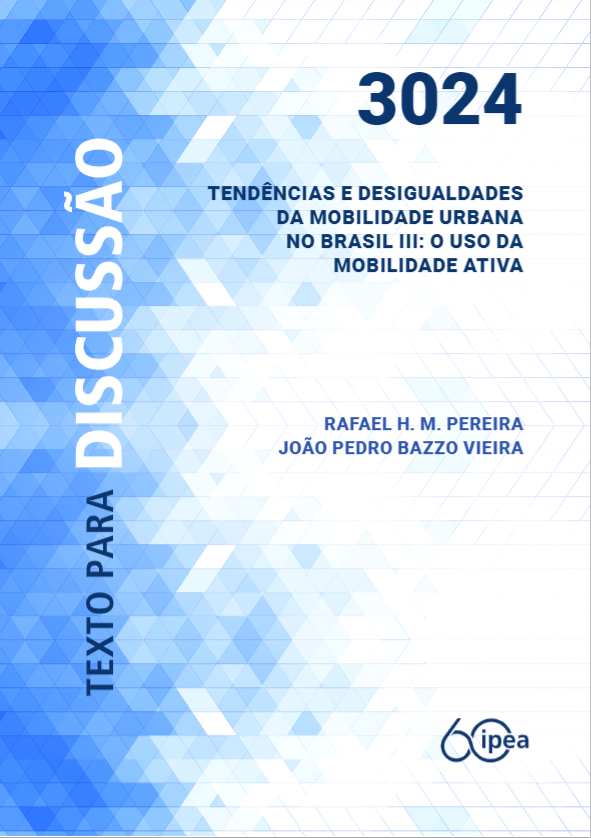Tendências e desigualdades da mobilidade urbana no Brasil III: o uso da mobilidade ativa

Abstract
This study analyzes how the use of active transportation modes (walking and cycling) in commuting trips in Brazil changed between 2008 and 2019, with disaggregated infor- mation by gender, race, age, educational attainment, and income level in the country’s urban areas and largest metropolitan regions. Additionally, the study also presents trends in traffic-related deaths involving pedestrians and cyclists by gender, age, and race between 2011 and 2021. The results indicate a widespread decline in active mobility in cities across all major regions and metropolitan areas of the country for populations of all socioeconomic profiles. Despite this decline, the study suggests that 23.6% of the employed population in Brazilian cities and 16.2% in metropolitan areas commuted on foot or by bicycle from home to work in 2019. The reduction in active transporta- tion rates in the country is reflected to some extent in the decrease in the number of pedestrian and cyclist deaths observed from 2011 to 2021. The decline in the use of active transportation in Brazilian cities adds to the trends of a persistent increase in motorized individual transportation and a decline in the use of public transportation n Brazil since at least the year 2000. Collectively, these trends indicate a concerning trajectory towards cities with a mobility profile increasingly dependent on motorized individual transportation, less sustainable, less inclusive, and less healthy. These results underscore the need for greater attention to studies collecting detailed information on walking and cycling trips capable of supporting the implementation of more effective policies for promoting active mobility and evaluating the impact of these policies.
Citation:
Pereira, Rafael H. M. and Bazzo, João (2024) Tendências e desigualdades da mobilidade urbana no Brasil III : o uso da mobilidade ativa. Texto para Discussão 3024. Ipea - Instituto de Pesquisa Econômica Aplicada. Disponível em https://repositorio.ipea.gov.br/handle/11058/14341